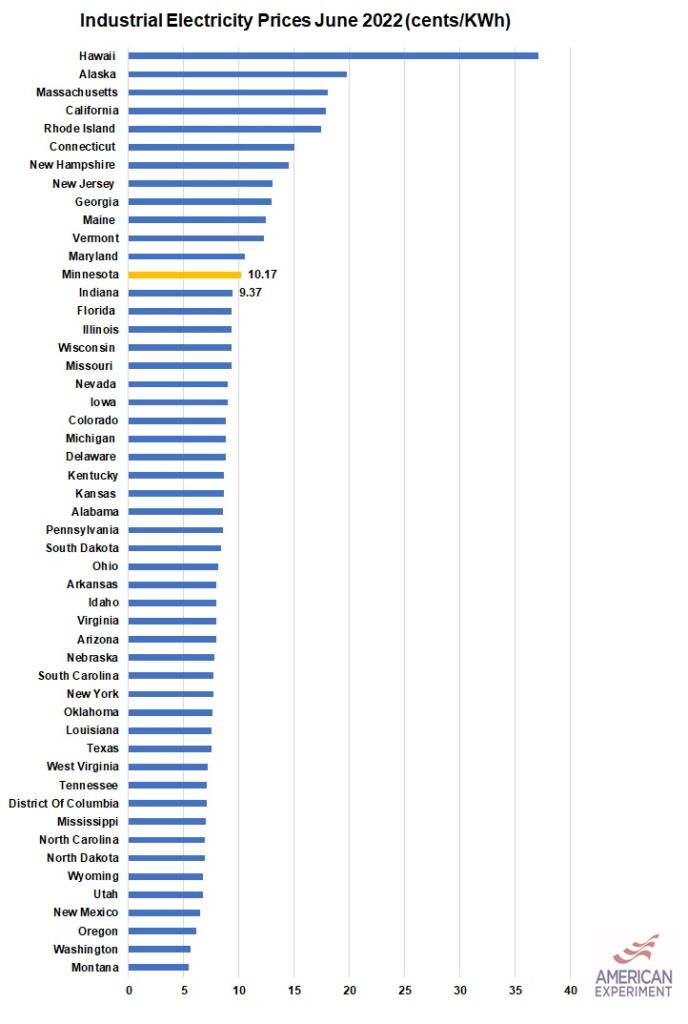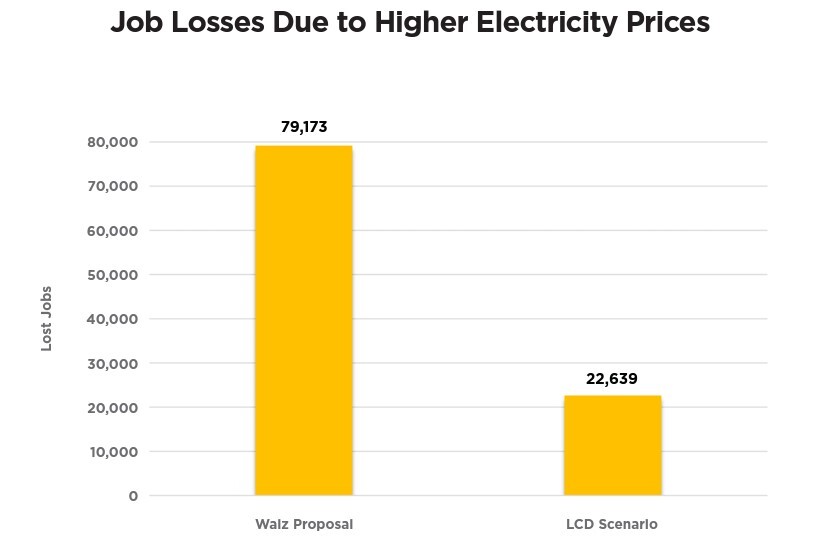MN has highest industrial electricity prices in Midwest, Gov. Walz’s energy plan will make it worse
Did you know Minnesota has the highest industrial electricity prices in the Midwest? Data from the U.S. Energy Information show that only twelve states in the entire country charge their manufacturers more for the electricity they use, and none of them are located in the American Heartland.

As we noted in a previous piece, manufacturing is a pillar of Minnesota’s economy, employing 327,591 people in 2021, in high-paying, family-supporting jobs, according to data from the Bureau of Economic Analysis.
Unfortunately, these jobs are already at risk because Minnesota manufacturers require large quantities of electricity to produce their products. High energy costs make them less competitive with firms operating in other states and nations.
The problem would get much worse if Minnesota adopted a 100 percent carbon-free electricity mandate by 2040, a policy that Governor Walz is advocating for.
American Experiment’s latest report, The High Cost of 100 Percent Carbon-Free Electricity by 2040: Governor Walz’s Proposal Would Cost Minnesota $313 Billion Through 2050 and Lead to Blackouts, industrial electricity prices would increase by nearly double by 2034.
The massive cost increases under the Walz Proposal would kill more than 79,000 jobs in the state by making electricity much more expensive, according to the economic modeling program IMPLAN, which is seen as the gold standard for these types of job impact analyses.

Job losses due to higher electricity prices would almost certainly be concentrated in the sectors of the economy that use the most electricity; this includes manufacturing and mining, two incredibly important sectors for communities throughout Minnesota.
Our energy policy decisions have a massive impact on our overall business climate in Minnesota. Long gone are the days when our once-low electricity prices were an attractive asset for businesses looking for a place to relocate. Years of mandating wind and solar in our energy mix have vaporized this competitive advantage and turned it into a liability.